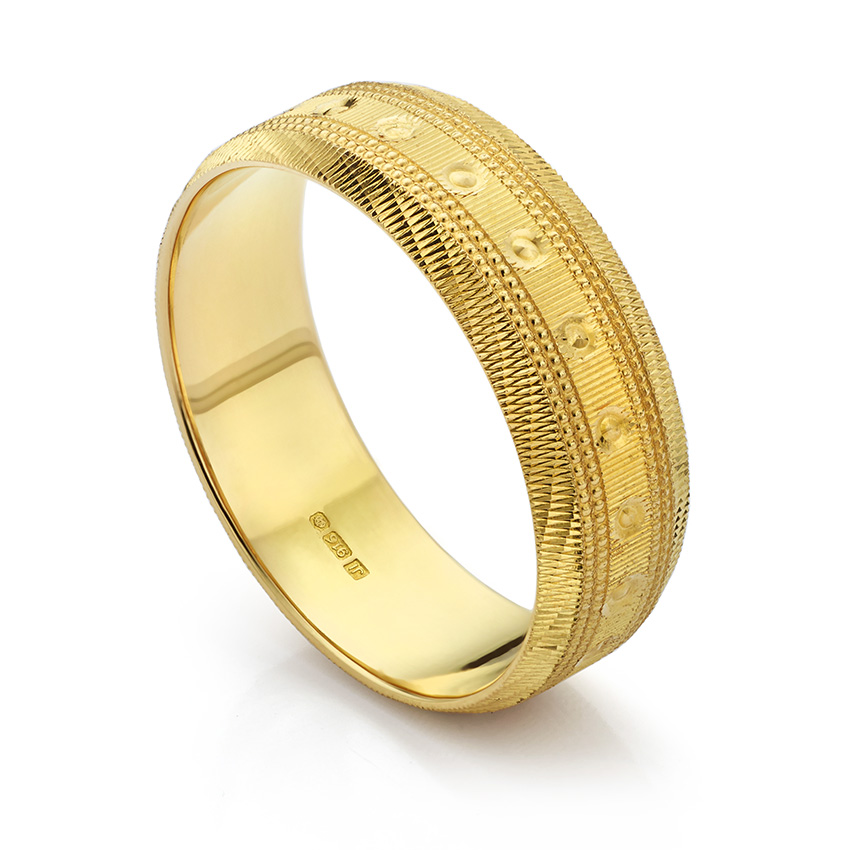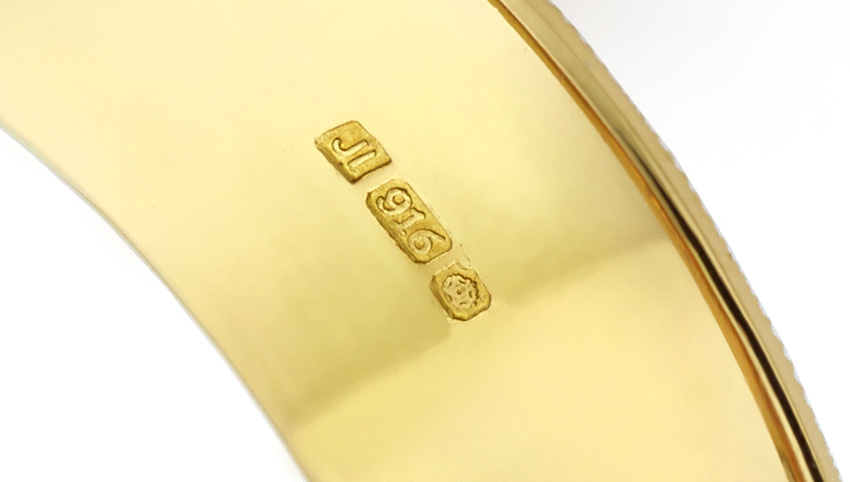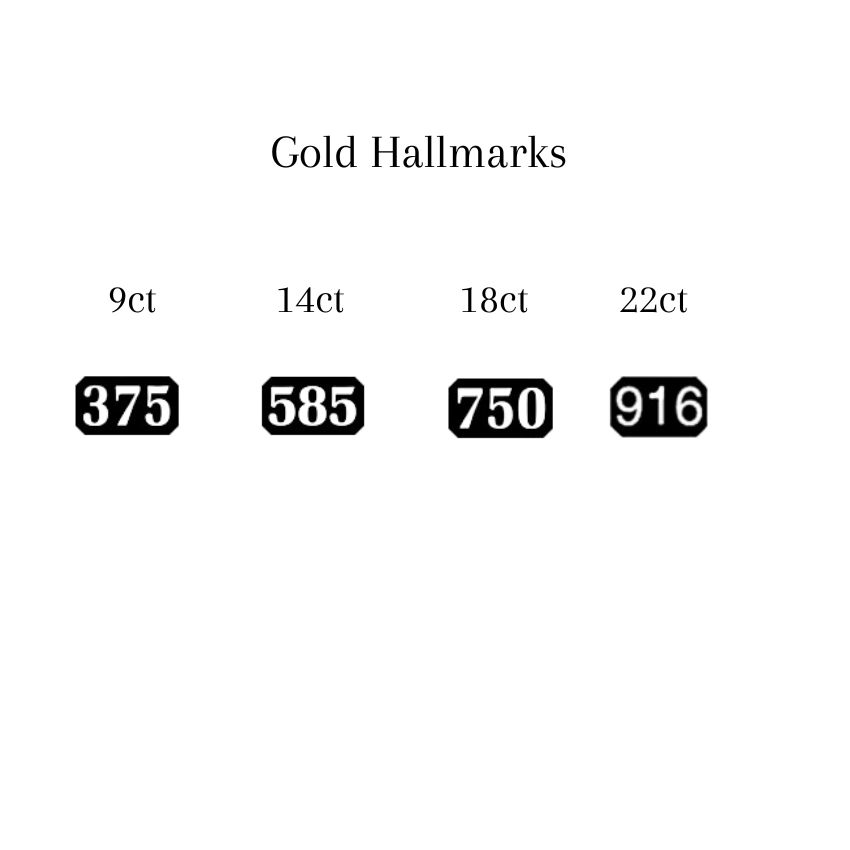Click here to get this article in PDF

916 Gold and the 916 Hallmark in jewellery
Most Gold jewellery features a hallmark to denote the purity, usually 9ct or 18 carat Gold. For example, 375 and 750 appear frequently in our jewellery commissions. On occasion, we have Gold jewellery hallmarked 916. The appearance of 916 Gold sometimes causes confusion.
What is 916 Gold?
The most common term for Gold stamped 916 is 22 carat Gold. Compared to 18ct Gold (75% pure Gold – stamped 750) 22ct Gold is 91.6% pure Gold. The higher Gold content results in a darker, richer colouration. 22ct Gold is popular for Indian jewellery. By comparison, 18ct Yellow Gold is a little lighter in colour.

Which is better – 18ct Gold or 22ct Gold
Although very durable, 18ct Gold is less malleable and more suitable for setting diamonds. Most jewellery in the UK is created in 18ct Gold, or 9ct Gold. The internal hallmark ensures the item has been tested at the Assay Office for fineness. As a result, buyers have reassurance that the metal description is accurate.
How heavy is 22ct Gold?
22ct Yellow Gold is approximately 1.15 times heavier than 18ct Gold. Visit our precious metal weight conversion chart for more help on converting precious metal weight.
Does 22ct gold tarnish?
Put simply, pure gold does not tarnish. Although all golds and precious metals will change colour and dull down over time. A simple professional clean and refinish will bring back it’s brightness and shine. As a result of the gold fineness, it can be easily worked with and reshaped if required.

The difference between 999ct gold and 916ct
In comparison, 999ct (24 carat) gold is the highest quality of fineness. 100% fine gold is very tricky to achieve due to the compromise in purity and it’s softness. As a result is not recommended for daily wear e.g engagement rings, wedding rings, bracelets.
Gold Hallmarks

The post 916 Gold – What Does the 916 Hallmark Mean on Jewellery? appeared first on Serendipity Diamonds Blog.
